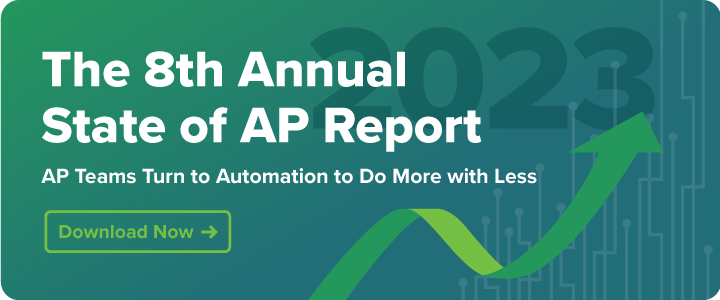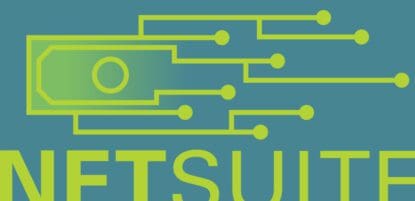The pandemic caused a perfect storm for retail. Customer behavior changed overnight, surging demand for online purchases while supply chain disruptions led to fulfillment delays and empty shelves. Unfortunately, at the same time, the great resignation left many retailers short-staffed, forcing them to do more with less.
The ripple effects from the pandemic – as well as lessons learned – will continue to impact retail for the foreseeable future. While savvy retailers promptly responded to changing customer behavior with new digital technology initiatives, other retailers still struggle with supply chain issues, accounts payable inefficiencies, and high costs, without enough staff to help.

Why Now for AP in Retail
Retailers understand the key importance that accounts payable plays in strengthening the supply chain and increasing productivity. The State of AP Report 2022, MineralTree’s seventh annual report, highlights that AP remains the #1 back-office digitization priority for retailers, and at a higher level than previous years. This is likely because now that many retailers have implemented technology to enhance online sales and fulfillment, they are ready to address critical back-office needs that affect the supply chain, operational performance, and budget. These priorities are all especially important in an industry like retail with razor-thin margins.
Another key insight from the survey is the importance of strong vendor relations to unlock and maintain critical access to goods. 77% of retailers reported that vendors have grown in importance over the past year, compared to 70% of non-retailers. But what must AP teams do to strengthen these relationships? A whopping 84% of vendors revealed the primary way to keep them happy is to simply make payments on time.
Manual AP Processes Continue to Drop the Ball
However, prompt payments depend on streamlined AP operations, which is just not feasible using manual methods. Retailers that still rely on manual invoice and payment processing are consistently burdened by a time-consuming, costly, and error-prone workflow. Consider how long it takes for AP staff to find invoices across the organization, manually enter data, and physically route invoices for review, especially now that so many people work from home. These tedious, manual steps often cause delays, late payments, and penalties for AP teams.
Unfortunately the problems of manual AP systems don’t stop there. Manual payment processing is also a problem, particularly when it comes to checks. Paying with checks requires the AP team to prepare checks, obtain authorizations and signatures, and then stuff, seal and mail them. Then it takes time for the checks to be delivered by mail. This process is costly and creates payment delays, increasing vendor inquiries and further burdening AP staff.
But just how successful is retail AP in addressing vendors’ needs and optimizing processes to gain efficiencies? Based on retailer survey data from this year’s State of AP report, this blog shares key challenges for retailers along with best practices that they are implementing to position themselves for success. We also explore how retail fares against their peers from other industries and what finance leaders can learn from them.
4 Areas Where Retailers Lead in Accounts Payable
There are four areas in which AP retail teams are ahead of their peers in other verticals:
1. Increased Invoice Automation
Nearly 76% of retail AP teams have automated invoice capture and coding, compared to just 61% of companies in other industries. This puts retailers on the path to streamlined, faster processing. Similarly, 39% of retailers have automated PO matching, and while there is room to improve, they clearly remain ahead of the 29% of non-retail peers who have automated this task.
2. Greater Use of ePayments
While ePayment usage is low across the board compared to checks, retailers are dipping their toes into all electronic payment methods more readily than non-retailers. 36% of retailers use ePayments 51-75% of the time, compared to about 21% of non-retailers. While still nascent, retail AP’s usage of virtual cards is 2.75 times greater than non-retailers (3.61% vs. 1.31%).
3. Processing More Invoices with the Same-Sized Team
71% of retail AP teams are processing more invoices/payments with the same-sized team compared to 60% of non-retailers, which are placing more emphasis on reallocating staff to other projects or reducing headcount. This may indicate that retailers are adding vendors or increasing spend, and need to accommodate that growth within current staff sizes, a key requirement in an environment where it’s difficult to find qualified candidates.
4. More Committed to Automation
Of the retailers who have partially automated their AP, 51.81% plan to automate further this year compared to 39.74% of companies in other industries. Additionally, they are looking to gain many benefits from ePayments, including time and cost savings, prompt payments, increased fraud protection, cash-back rebates, and improved vendor relations.
Key Obstacles of Accounts Payable in Retail
While AP retail teams are gaining the benefits of automation, including faster processing and payment, greater visibility into invoices and payments, and reduced costs, they still face greater obstacles that need to be addressed, including:
Supply chain issues lead to more payment delays, less discounts.
Due to supply chain disruptions, 51.81% of retail AP teams are experiencing payment delays or reconciliation issues, compared to 38.04% of non-retailers. This reduces early-payment discounts.
Missing cash rebates despite greater desire for rewards.
With tight margins and pressure to reduce back-office administrative costs, it’s no wonder that retail AP teams are more interested in receiving rewards and rebates (30.12%) than their non-retail peers (21.57%). Yet, as noted above, retail AP still has to increase virtual card usage to bring in much-needed cash.
More time spent responding to inquiries.
Retail AP teams are getting more bogged down addressing vendor inquiries, with 18.07% spending 11-20 hours each month, about ten percentage points higher than non-retailers (8.63%).
Greater budget limitations.
While about 29% of retail AP teams believe their current practices are working compared to 43% of non-retail teams, they are more impacted by budget constraints (28.57% vs. 15.61% of non-retail teams).
Quick Wins for Retailers in Accounts Payable
The report highlighted several areas where retail finance leaders can gain critical value, including:
Increase Automation
By furthering automating, retail AP can reduce costs and increase productivity, payment speed, and vendor satisfaction. End-to-end automation, from invoice automation through payment, delivers even faster, more streamlined, and cost-efficient operations. It provides full visibility – and coupled with analytics – enables more effective cash flow management, which is critical when operating under tight margins.
Use Virtual Cards to Get Rebates, Reduce Costs
Savvy retailers using ePayments can significantly reduce processing costs and delays, and make more timely payments. Virtual cards are ideal because they enable retailers to earn money while also providing the most secure payment method. Some companies are not only able to offset the cost of automated AP processing with virtual cards, but even transform AP from a cost to profit center.
Vendor Portals and Managed Payment Services
Self-service portals enable vendors to check on the status of their invoices and payments without assistance from AP staff. Even better, managed payment service providers reduce the AP burden by handling vendor enrollment as well as fielding any payment-related inquiries.
Lingering supply chain disruptions from the pandemic have caused inventory, payment, and invoice processing delays, adding volatility to an already complex retail market. The good news is that retail finance leaders are recognizing the benefits of investing in AP automation. They are also well on their way to gaining the productivity, cost savings, and insights to better manage cash flow, strengthen supplier relations, and help their companies thrive in all market conditions. Interested in learning more? Download the 2022 State of AP report today.




